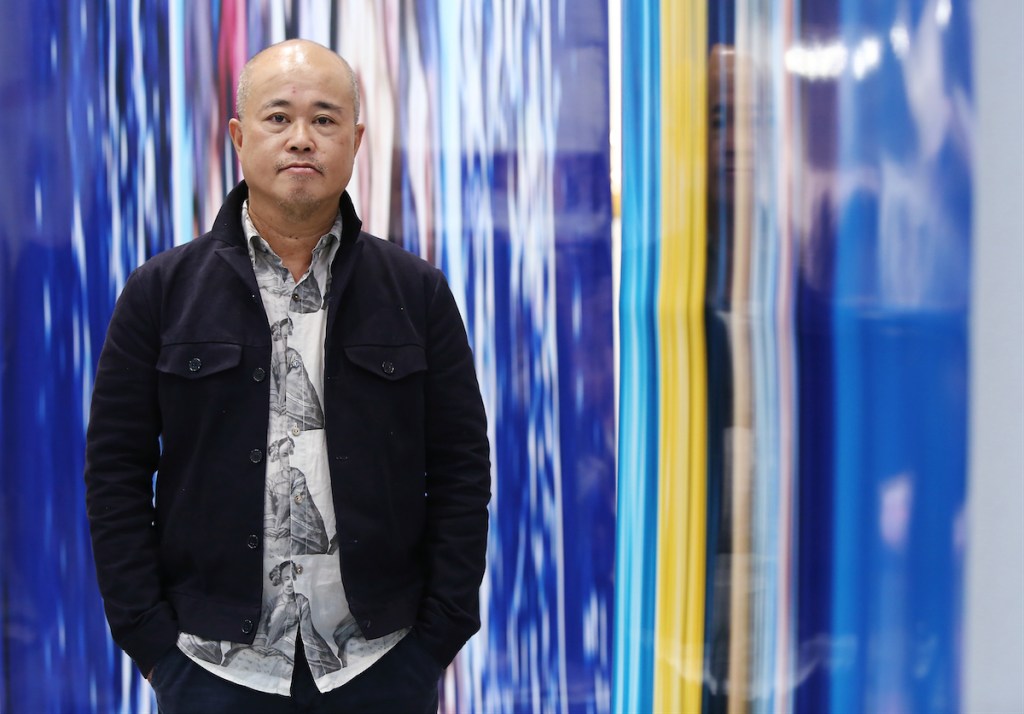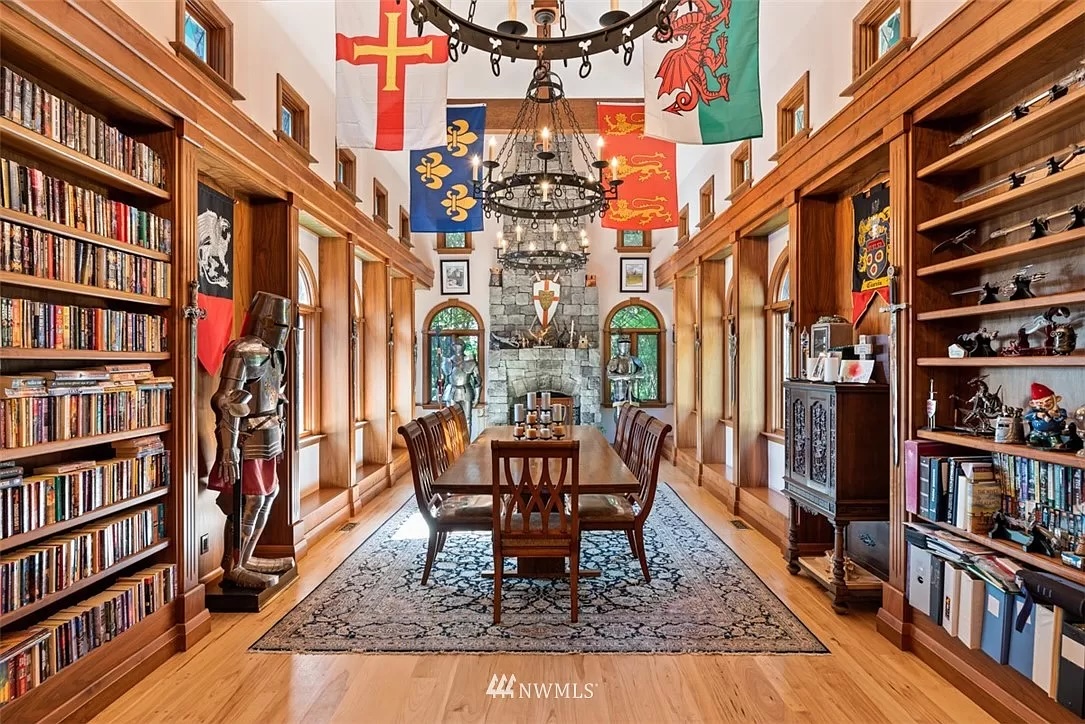Dinh Q. Lê, an acclaimed Vietnamese artist who showed how his nation’s collective consciousness had been transformed by conflict and the loss of history, has died at 56.
Lê’s family announced his death on Facebook on Sunday, saying that he had suffered a stroke. A spokesperson for P.P.O.W, Lê’s New York gallery, confirmed his passing.
His photo installations and video works spoke to a scarred, melancholic Vietnam in which fact and fiction freely mingled, forming a state in which it seems difficult, perhaps even impossible, to access the past as it actually occurred. His work frequently explored how the Vietnamese psyche had weathered US military action as part of a conflict known within his home country as the American War.
For a series of famed photographic works that form a series called “From Vietnam to Hollywood,” Lê wove together various images, creating ghostly people and abstracted landscapes. He blended archival photography, stills from films such as Apocalypse Now, and documentary pictures of the war, and showed that none of these forms of image-making had adequately captured what really went on in Vietnam between 1955 and 1972. Lê had taken up the technique in homage to his aunt, who wove grass mats, but the works he produced suggested nothing so traditional.
Other woven works could sometimes take on grand proportions. Mot Coi Di Ve (1999), one of the works that helped make Lê famous, brought together thousands of pictures from family albums. On the back of each picture, Lê scrawled various texts, including some quoting The Tale of Kieu (1820), Nguyen Du’s epic poem about a woman who sells herself into marriage to rectify her family’s situation. The piece is about what disappears across time; its title translates from the Vietnamese to “spending one’s life trying to find one’s way home.”
“There is an urgent need for expressions of collective memory freed from restraint; many people are actively engaged in building these narratives—I chose to do so through art,” Lê told Vietnamese curator Zoe Butt in 2013.

Dinh Q. Lê with the helicopter that appears as part of his 2006 video installation The Farmer and the Helicopter.
WireImage
Dinh Q. Lê was born in 1968 in Ha-Tien, Vietnam, and remained in the country after the war ended, even as the Khmer Rouge regime led attacks in the area near where his family lived. Amid all the violence, his family departed Vietnam, ending up first in a Thai refugee camp, then in California’s Simi Valley, all before Lê had even become a teenager.
He attended the University of California, Santa Barbara as an undergraduate, then the School of Visual Arts in New York as a graduate student. But he said he “never really fit in” in the US, and went on to live in Ho Chi Minh City starting in 1994.
“I think maybe that’s the thing about who I am—I was born in Vietnam, raised in America, educated in the West and educated in the language of Western contemporary art,” he said in an interview conducted for the Diasporic Vietnamese Arts Network. “Now coming back, this is where the two meet within me. I’m sort of a combination of the two—the West and the East, the local and the international.”
Lê’s most famous work may be The Farmers and the Helicopters (2006), a video installation that features staged footage from fictional Western films that depict the arrival of US aircraft in Vietnam, along with interviews with Vietnamese people who saw the actual helicopters firsthand. The video points out the mismatch between Western and Vietnamese perspectives on the war, which tend to contradict one another.
Injecting further disjunction to the mix was Lê’s choice to exhibit a helicopter as part of the installation—not a real aircraft, notably, but one composed of recycled parts that was crafted by Le Van Danh, a farmer who was interviewed in the video, and Tran Quoc Hai, a friend of Lê and a mechanic.
When that video was shown at New York’s Museum of Modern Art in 2010, it was received rapturously. “Uncertainty is the right attitude to bring to the study and writing of history,” wrote Holland Cotter in the New York Times. “And it is, on the whole, the one Mr. Le brings to his art, and notably to his remarkable video, with its visually tight and ideologically porous weave of fact and fiction, memory and illusion, with the elements of each pair in constant, volatile interchange.”

Dinh Q. Lê, The Deep Blue Sea, 2017.
Photo Nora Tam/South China Morning Post via Getty Images
Later works would take the form of photographs that were manipulated via digital effects until they were totally unrecognizable. His 150-foot-long photograph The Scroll of Thich Quang Duc (2013) portrayed the titular Buddhist monk who burned himself in protest of US military aggression in Vietnam, but the action itself was abstracted because of how Lê had edited it. The print, which is so large that it had to be folded to be shown in most venues, came with a gold-leaf lacquer box, into which it can be placed when it was not on view.
Across the last few decades, Lê’s work has been shown widely on the biennial circuit, featuring in the 2003 Venice Biennale, Documenta 13 in 2012, and editions of the Singapore Biennale and the Gwangju Biennale.
In Vietnam, Lê’s longest-lasting legacy is Sàn Art, the Ho Chi Minh City art space that he cofounded in 2007. It has proven crucial in mounting independently organized shows in a country whose art scene Lê had sometimes bemoaned as being overbearing for artists.
“The continued systematic erasure of the history of Southern Vietnam by the current government, the lack of analysis of our cultural resources, strict governmental control of the flow of information, and the self-censorship that is so deeply ingrained in current Vietnamese society have together led us to a point at which we know very little about either who we were or who we are,” he said in the 2013 interview with Butt.
Pulitzer Prize–winning Vietnamese American novelist Viet Thanh Nguyen was among those who mourned Lê this weekend on social media. On Facebook, he praised Lê as a “cultural diplomat, ushering foreigners around Viet Nam and its art world and building bridges between Viet Nam and the world through art and artists.”



